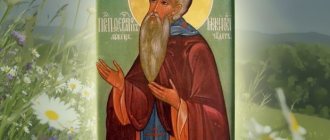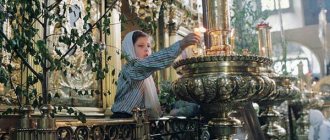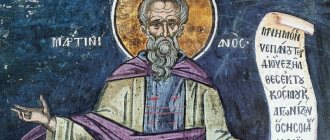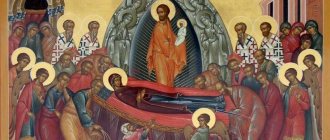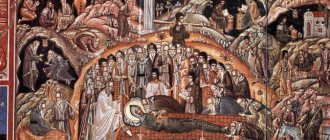On October 14, 2021, popular rules say to solemnly celebrate the church festival of the Intercession of the Most Holy Theotokos, the history of which is easily traced to the legend of the appearance of the Mother of God to Andrei the Fool. According to the old calendar, it is celebrated on October 1. This date is considered the main autumn festival of Orthodoxy, favorite during the times of Kievan Rus.
The Feast of the Intercession of the Blessed Virgin Mary is celebrated in Russia on October 14. On this day, believers remember how the Mother of God saved praying people in besieged Constantinople.
What is the Intercession of the Blessed Virgin Mary
The Protection of the Most Holy Theotokos is one of the great holidays of the Russian Orthodox Church. Its full name is the Protection of Our Most Holy Lady Theotokos and Ever-Virgin Mary.
According to legend, the Mother of God appeared to those praying in the Blachernae Church in Constantinople. This happened in 910. The Mother of God spread her omophorion (head cover) over the people, and this miracle became a sign of intercession and consolation over the people. The Protection of the Most Holy Theotokos is celebrated only in the Russian Church.
What do they pray for on this day?
People pray before the icon of the Intercession of the Blessed Virgin Mary
- About help when the Motherland needs protection.
- About helping those who serve in the army or otherwise protect the country from enemy attacks, even if these are not military, but political or verbal attacks.
- About spiritual healing when you need to defeat the internal enemy.
- About stopping evil attacks and temptations.
- About healing from serious illnesses.
- About increasing wealth and acquiring housing.
- About support in difficult life situations, when there is not enough strength to deal with adversity.
- About mental fortitude and finding harmony between the inner world and the external circumstances of life.
Events of the Intercession of the Blessed Virgin Mary
The history of the event itself, which served as the reason for the establishment of the holiday, is known quite well. Barbarian troops approached Constantinople. In those years, such raids often ended in bloody massacres, and residents of the Byzantine capital justifiably expected that by the morning they could say goodbye to life.
The priests of the city prayed for deliverance from their enemies, and then at four o’clock in the morning the famous Christian saint, the holy fool Andrew of Constantinople (a Slav who was once captured by Byzantine captivity), had a vision in the Blachernae Church of Constantinople. In the sky, he saw the Mother of God walking through the air, illuminated by heavenly light, surrounded by angels and a host of saints. As Saint Demetrius of Rostov describes this vision, the Mother of God “took off the great and terrible veil that shone like lightning, which she wore on Her Most Pure Head and, holding it with great solemnity with Her Most Pure hands, spread it over all the standing people.”
A miraculous cover protected the city. The storm that arose scattered the ships of the barbarians, saving the inhabitants of Constantinople from death.
Of course, the fact of a miracle cannot be proven scientifically, but there is a lot of historical information about the very fact of the siege and the saving storm. The only question that arises is who were the bloodthirsty conquerors of the Byzantine capital? According to some sources, these were the Saracens who came to Constantinople. However, there is another version.
According to a number of scientists, the events of the holiday describe what happened to the squads of the Russian Varangian princes Askold and Dir. The famous Church historian Anton Kartashov cites the text of Patriarch Photius, which chronologically confirms that the events could have taken place in 866, which means that the attackers were the Russes, and not the Saracens, since the Saracen invasions happened half a century later. The Patriarch writes: “Do you remember that dark and terrible night when the lives of all of us were ready to go down with the sunset and the light of our existence was swallowed up by the deep darkness of death? Do you remember that unbearably sad hour when barbarian ships sailed to us, breathing something fierce, wild and murderous? When the sea quietly and serenely spread its ridge, giving them a pleasant and longed-for swim, and raising fierce waves of war upon us. When they passed in front of the city, carrying and pushing forward swimmers who raised their swords and seemed to threaten the city with death by the sword...
History of the celebration of the Intercession of the Blessed Virgin Mary
We read about the establishment of the holiday in the Russian Prologue of the 12th century (Old Russian hagiographic collection).
“Behold, when I heard, I thought; what a terrible and merciful vision, and more than our hope and intercession, that there should be without celebration... we wished that Thy Holy Protection, the Most Blessed, would not remain without celebration.”
In Rus', churches in honor of the Intercession of the Mother of God began to be built in the 12th century. One of the most ancient and beautiful is the Intercession on the Nerl . It was erected by the holy Prince Andrei Bogolyubsky. There is an assumption that it was he who spread the tradition of celebrating the Intercession of the Virgin Mary in Rus'.
Icon of the Intercession of the Blessed Virgin Mary
The most ancient images of the Feast of the Intercession in Rus' can be seen on the gates of the Nativity Cathedral in Suzdal and in the paintings of the Cathedral of the Snetogorsk Monastery in Pskov. They date back to the 14th century.
Two main iconographic traditions of the Intercession are known – “Suzdal” and “Novgorod”. In the first case, the Mother of God is depicted in front of the temple, she extends her omophorion (head cover) over everyone who prays in it. The very first example of the “Suzdal” type known to us is the temple icon of the Pokrovsky Suzdal Monastery. It was painted in the second half of the 14th century, and is now kept in the State Tretyakov Gallery.
In the “Novgorod” type of icons, the omophorion is supported by angels, not the Mother of God. The Mother of God herself is depicted standing inside the temple. One of the earliest icons of this type comes from the Zverin Monastery and dates back to 1399. Now it can be seen in the Novgorod Museum.
At the end of the 15th century, these two iconographic traditions began to unite.
Troparion of the Intercession of the Blessed Virgin Mary
voice 4
Today, faithful people, we brightly celebrate, overshadowed by Your coming, O Mother of God, and looking to Your most pure image, we tenderly say: Cover us with Your honorable Protection and deliver us from all evil, praying to Your Son, Christ our God, to save our souls.
Translation:
On this day, we, Orthodox people, solemnly celebrate, blessed by Your coming, O Mother of God, and, looking at Your most pure image, we cry with tenderness: “Cover us with Your sacred veil and deliver us from all evil, begging Your Son, Christ our God , about the salvation of our souls"
Signs of the Intercession about the weather
Veil is considered a transitional period between seasons, so many of the signs relate to the coming winter - what it will be like:
The cranes have flown to Pokrov - expect an early and cold winter.
If the oak and birch trees have completely fallen off before the Intercession, winter will not rage, but if the leaves remain on them, then severe frosts and winds are ahead.
Where the wind blows from is where you expect frost.
If snow falls on Pokrov, then November 8 (Dmitri’s Day) will also be snowy, and if not, then there will be no snow by Catherine’s Day (December 7).
If the first snow falls before the Intercession, then winter will be a long wait.
What is the weather on Pokrov, so is winter.
Comments
Intercession Day - folk traditions of the holiday
Shibanov Mikhail. "Celebration of the wedding contract." 1777. Tretyakov Gallery. Moscow.
In Rus', the holiday of the Intercession of our Most Holy Lady Theotokos and the Ever-Virgin Mary was called the Intercession Day, and also: the First Winter, the Wedding, the Third Most Pure, Zasidki, Obsichane, the Day of the Roman Sweet Singer, the Intercession-Father.
In the popular consciousness, the Christian meaning of the event that formed the basis of the holiday was closely intertwined with purely secular customs. The change of seasons, remnants of pagan beliefs, everyday chores - everything had an impact.
At this time (October 1 according to the old style, October 14 according to the new style) agricultural work ended, peasants prepared for winter, girls gathered for gatherings. It was also the beginning of the fall wedding season.
Pokrov - “meeting Autumn with Winter.” People were waiting for the first frost, which “covered” the ground and was an omen of impending cold weather. In addition, the peasants associated the word “veil” with the custom according to which, after a wedding, a woman could only walk with her head covered. Only unmarried girls were allowed to go “straight-haired”.
Wedding signs on Intercession
The beginning of the Intercession always marked the end of autumn and the beginning of winter. They often said: “On Intercession, before lunch, it’s autumn, and after lunch, it’s already winter.” Indeed, on this day the first snow could be seen. It fell to the ground in soft fluffy flakes, covering it with an even white layer. This snow looked like a bride’s wedding veil and for good reason!
Pokrov was often called the “maiden holiday.” Unmarried girls turned to the Mother of God with prayers, asking her to grant her a groom. From the very morning they ran to the church to light a candle in front of its icon. It was believed. Whoever does this first will get married sooner.
Veil is considered a maiden or wedding day, therefore there are signs associated with marriage and matchmaking.
From that day on, our ancestors sent matchmakers to the houses of brides and agreed on upcoming weddings:
If you spend the Intercession fun, the groom will be good and handsome and will soon be found.
To lure the groom, you need to bake bread and put it on the windowsill overnight.
The more snow that falls on this day, the more weddings will be held this year.
A strong wind is blowing - there will be many brides.
If a guy meets a girl on Pokrov, then be their bride and groom.
If you jump out into the street in the morning and wash yourself with snow, saying: “Pokrov-veil, cover Mother Earth with snow, and me, a beautiful girl, a good groom,” then soon you will meet your betrothed. Of course, this can only be done if the snow is clean, and Pokrovsky snow also gives beauty.
The girl who will be the first to get married is the one who comes to church before all her friends and lights a candle for the Virgin of the Intercession.
Pokrovsky stauropegial convent in Moscow
The Pokrovsky stauropegial convent at the Pokrovskaya outpost in Moscow was founded by Tsar Mikhail Feodorovich in 1635. According to legend, it was consecrated in honor of the Intercession of the Mother of God because Mikhail Feodorovich’s father, Patriarch Filaret, died on this very holiday.
At first the monastery was called “Protection on Poor Houses,” because here, on the outskirts of the capital, there was a cemetery for the burial of the homeless, vagabonds and executed people. The Intercession wooden church existed before the founding of the monastery and was a parish church.
In 1808, a stone monastery cathedral was erected on the site of the dilapidated church, and in subsequent years the territory of the monastery was decorated with another church - in the name of All Saints, a three-tiered bell tower, walls and gates. From 1751 to 1776, the Theological Seminary was located here, and in the 19th-20th centuries the monastery cemetery was the burial vault of the Moscow merchants.
In 1812, the monastery was destroyed by the French, but several years after the war it was restored. In 1926, the Soviet authorities blew up the monastery bell tower, then closed the Intercession Church, demolished the chapel and grave monuments. In 1929, the Resurrection Church was closed. A park was built on the site of the cemetery, and it still exists today. For about 70 years, trusts, offices, banks, a gym, and a billiard room were located in temple buildings and monastery buildings.
In 1998, the relics of the righteous old woman Matrona were transferred here from the Danilovsky cemetery. In 2004, Blessed Matrona was canonized. Now the Intercession Monastery is a place of pilgrimage for everyone who wants to pray at the relics of the old woman.
history of the holiday
For Orthodox believers, Intercession is the main autumn holiday. It begins its history in 910, when Abbot Andrei and his assistants presided over services in the Church of Blachernae (the things of the Mother of God herself were kept in it), which was located in the city of Constantinople. It is known that just during this period of time there was a brutal war between the Greeks and Saracens. And the local residents had no choice but to pray to the Almighty and call on him for help.
The image of the Queen of Heaven floating in the air appeared before the eyes of the abbot and his assistants. According to legend, she held a white veil in her hands and tried to bow her head in prayer for the believers. After a short period of time, the Mother of God covered all believers with this veil from troubles and possible misfortunes. She strengthened their strength and spirit, trying to help in a difficult situation, and also healed them from various ailments. The phenomenon that arose inspired the Greeks and raised their morale, as a result of which they won the battle with the enemy.
For our ancestors, the memory of the vision associated with the appearance of the Queen of Heaven, who spread the veil over the people praying in the church, also had a deep meaning. Because it was believed that a veil was also spread over Russia. What is Intercession on the Nerl and when was the holiday officially established in Rus'?

